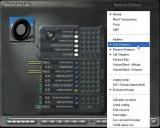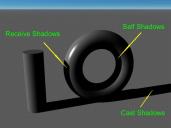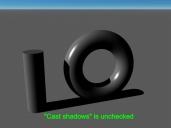Unpleasant shadows properties in Bryce 7 Pro
 Slepalex
Posts: 911
Slepalex
Posts: 911
I have just found out the unpleasant properties of shadows in Bryce 7 Pro. We are talking about the properties of the material "Cast Shadows", "Receive Shadows" and "Self Shadows".
If you disable the "Cast Shadows", the object should not cast a shadow, but must maintain the shadow that he casts on their own part. But this is not happening. The object loses its "Self Shadows" property, though this option is checked.
If you disable the "Receive Shadows", the object can not perceive the shadows of nearby objects. However, as the object loses its "Self Shadows". But this should not be!
If you disable only the "Self Shadows", then everything is working correctly. The object does not cast a shadow on their own part from itself, but casts a shadow on other objects and receives the shadow of a nearby object.
***
As far as I remember, in Bryce 5 such collision wasn't. The request to those who has the installed Bryce 5.x, Bryce 6.x and Bryce 7.x to check this error.












Comments
Slepalex - interesting observation. I rendered all 8 possibilities in Bryce 5.01 and 7.1 and I got the same results (below shown from Bryce 5.01). From the direction the sun shines (shown by the specular highlight), the part of the ring nearer to the sun should cast a shadow onto the inner side of the part away from the sun. This is only the case if all three options are active.
I think the torus is a special case and a question of how it is interpreted by the render engine. The body casts a shadow, but at the same time it can receive a shadow from itself. Looking at it from this angle, it makes sense that the torus must cast a shadow, be able to receive a shadow and this shadow is cast on itself, so self shadows must be enabled as well.
Yes, I agree that the torus primitive is likely a special case. Should try with an imported torus just to be sure.
The shadow options work hand in hand with the surface material blending options. In Normal blending mode disabling cast shadows prevents the material from casting any type of shadows including self. If you only disable receive shadows, the material won't receive any shadows including self. I find the shadow option extremely useful when in Blend Transparency mode. for hair & eye lash trans maps and such. In Blend Transparency mode with self shadows disable it will actually eliminate the amount of shadows cast to other objects. Because light does not collect the self shadow and add it to the visible parts of the objects shadow. When the blending mode is set to Fuzzy and self shadows is disabled. The material will not cast any shadows because the shadows are collected as light passes through the fuzzy object. When the blending mode is set to Light it does not become a light source or emit radiosity, but like light particles ( photons ) it will not cast or receive any shadows no matter how the shadow options are set. Also if a material is set to Additive it will not cast or receive shadows. But the self shadow option can help regulate it's density if transparency is set to zero with no alpha map driving the channel. The same holds true for the shading modes in volume materials.
Thanks, Horo. I knew that you the first will respond!
Such entertaining arithmetics turns out:
None = Self
Cast = Cast + Self
Reseive = Reseive + Self
It was necessary for me that in the mode Reseive + Self an object cast shadows on own parts. But alas!
*****
Was the task that a mountain range does not cast a shadow on the tree instances in the valley (sphere in Fig.). But the mountains have to take shade from the trees. At the same time, the ridge must provide their own shadow in the valley. Except the sun, the scene should lit with "Sphere Dome Light" and HDRI.
Well, we will seek how to cheat Bryce.
Alas, Rashad! The same happens with the ridge!
****
PS. I just checked with the torus of Wings 3D. All the same.